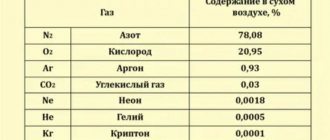It was just minus 25, and now there is above-zero temperature and rain, and in a few more days they promise a strong minus. Such temperature swings are accompanied by sharp jumps in atmospheric pressure. Because of them, weather-dependent people experience severe headaches, weakness and other unpleasant conditions. This occurs due to the fact that the vessels do not have time to rebuild and react to new conditions with spasm. Hypertension, people with high blood pressure, those who have problems with the cardiovascular system, as well as people leading a sedentary lifestyle are especially affected by temperature changes. Those who have chronic diseases of the gastrointestinal tract, respiratory system, and spinal problems are also at risk.
During temperature swings, experts recommend that all weather-dependent people follow a drinking regime, a gentle diet and try not to overstrain the body, get enough sleep and, if possible, walk in the fresh air.
Questions and Answers Why are white foods dangerous? Eating right during such a difficult time is very important. Unfortunately, we often do not pay attention to this important aspect; we eat and drink things that will only complicate health problems, intensify or even cause headaches.
We'll tell you what you shouldn't eat or drink if you tend to feel unwell during sudden changes in temperature and atmospheric pressure.
Important! The editors recommend that if you are dependent on weather conditions, have problems with blood pressure, or have headaches, consult a doctor. Our recommendations can only serve as an auxiliary tool for prevention; in no case do they cancel a visit to a specialist who will recommend the necessary medications and prescribe a course of treatment.
Coffee
Drinking several cups of coffee a day is not a good idea, especially if you have high blood pressure and are sensitive to the weather. Coffee increases blood pressure. Caffeine can cause vasospasm and headaches.
By the way, not only caffeine is dangerous. The drink contains tannins, which are harmful in large quantities: they can cause headaches.
Mysteries of coffee grounds. Why does coffee invigorate some and put others to sleep? More details
Increases or decreases blood pressure
Even a small amount of pepper can replenish your daily vitamin C supply, as well as improve your mood and restore vigor. Meanwhile, it is best to use this product for hypertensive patients. It has the properties to slightly lower blood pressure.
Due to its invigorating effect, it is not contraindicated for people with low blood pressure. In small quantities, pepper can be safely introduced into the diet of hypotensive patients.
For hypertension, the product may slightly reduce blood pressure. Approximately 7-10 mm Hg.
With daily use of pepper, the walls of blood vessels will soon become more elastic and stronger.
If you drink hot pepper juice, the hypotensive effect will be noticeable immediately. This method is often used for hypertensive crisis . It is recommended to start this treatment with small doses. For example, from half a teaspoon. Gradually the amount of juice can be increased.
Eating thermally processed pepper does not lower blood pressure. The same can be said about alcohol tinctures sold in pharmacies.
Cheese
Aged cheeses also contain amines. Especially dangerous for those who are prone to migraines and react sharply to weather changes are blue cheeses, brie and camembert, which have a moldy crust, and parmesan. They contain the substance tyramine, which causes brain vessels to first contract and then expand sharply. Tyramine also competes with the “happiness hormone” serotonin and displaces it from the body.
Article on the topic
Add pepper. What healthy spices should you replace salt and sugar with?
Hot red pepper
This is a variety of red pepper, also known as Cayenne. It is characterized by comparatively less pungency. But thanks to the content of useful elements, vitamins and minerals in it, it has found use not only in cooking, but also for medicinal purposes.
Studies were conducted at the English University of Science that confirmed that including red pepper in your diet helps maintain normal blood pressure levels and strengthens the walls of blood vessels.
This variety is rich in a compound called capsaicin.
It is this substance that is responsible for the pungency of the vegetable. For medicinal purposes, capsaicin is more useful as a fat burner and an extract that helps reduce the risk of cancer.
Smoked meats
They contain not only tyramine (especially smoked and dried sausages), but also flavor enhancers that can worsen a headache attack and even cause it. Monosodium glutamate and nitrites, especially in large quantities, are harmful to the body. There is also a lot of salt in smoked delicacies.
Both tasty and healthy. Why you shouldn't give up eating meat Read more
Black varieties
Black pepper is a well-known spice that is added to many dishes to give them a spicy kick. The spice comes in the form of peas growing on an evergreen vine.
The dark variety contains enough microelements and vitamins:
- Useful vitamins - B, E, A, C;
- Potassium, magnesium, calcium, phosphorus (macroelements);
- Zinc, iron, copper, selenium (microelements).
This variety of pepper helps the body get rid of toxins, cleanses the intestines well and improves digestive processes.
Another beneficial property is associated with the ability to cleanse blood vessels and prevent the risk of cardiovascular pathologies. This also applies to heart attacks and strokes.
Black pepper is recommended to be consumed during the cold season, as it supports the immune system well and fights various viruses.
Beneficial features
Speaking about pepper, it is worth noting its other beneficial properties.
In addition to its beneficial effects on the heart, blood vessels and blood pressure, it has:
- Hot pepper in small quantities awakens the appetite. Relieves depression and improves mood.
- Hot peppers are a powerful fat burner. Recommended for anyone who wants to lose excess weight.
- This sweet variety of vegetable is recommended for people suffering from insomnia, chronic fatigue and stress.
- Women should pay attention to sweet peppers. It improves the condition of skin and hair, prevents the appearance of wrinkles and restores elasticity to the skin.
Due to its beneficial properties, pepper should be added to the diet in small quantities for preventive or therapeutic purposes.
Contraindications
Despite the huge number of advantages, the vegetable has contraindications:
- The product is not recommended for use if you have gastritis or ulcers. This is especially true for hot pepper varieties.
- People who suffer from constipation or hemorrhoids should also be careful when consuming vegetables.
- Hypotonic people can add pepper to their diet, but in small quantities.
- It is better to avoid it for pregnant and breastfeeding women.
Thus, the benefits of pepper for the body are undeniable. Hypertensive patients should use it regularly, but not exceed the daily intake!
Unfortunately, this is not a replacement for medication.
Therefore, when treating hypertension, you must always consult a cardiologist. Be sure to take the necessary medications and maintain your health in other ways. Including pepper in your diet in this case will be a very good way to prevent many complications. Author of the article Svetlana Anatolyevna Ivanova, general practitioner
Spicy food - harm or benefit
Why is spicy not a taste?
There are no others, which does not prevent us from using the word “taste” in everyday life when assessing the taste and aroma properties of dishes or drinks. The combination of signals from receptors in the sinuses and mouth allows you to experience sensations such as pain or irritation. For example, a fire starting in the mouth from spicy food.
When a spicy dish or sauce contains pepper, we are left breathless by capsaicin, a substance named after the Capsicum family of capsicums and which gives its name to a class of structurally similar substances.
About 10 capsaicinoids of natural origin have been isolated from hot pepper fruits. Capsaicin in this mixture accounts for an average of 70%, the second most common is dihydrocapsaicin (about 20%), the content of other species is less than 2%.
Fire in your mouth?
The highest content of capsaicin is in the pulp of capsicums and their seeds. In its pure form, if it comes into contact with the mucous membrane or skin, it causes severe irritation, but even the hottest pepper contains capsaicin that is safe
When spicy food enters our mouth, capsaicin binds to TRPV1 receptors located on the surface of the taste buds of the tongue and in the mucous membranes. After activation by capsaicin, TRPV1 receptors change their structure, and the signal about this change begins to travel along the trigeminal nerve - the main sensory nerve of the face and oral cavity - to the brain. The brain interprets this signal as an increase in the temperature in our mouth. The reason for this sensation is that TRPV1 receptors are usually activated when the temperature rises above 43°C. Thus, TRPV1 sends a signal to the central nervous system, warning that the body is overheating, thereby protecting its owner from the danger posed by hot food. These same natural “thermal sensors” can also recognize certain types of substances contained in foods that we consider “spicy”.
TRPV1 receptors are also activated by allyl isothiocyanate, a substance that gives mustard, horseradish and wasabi its pungency.
How capsaicin tricks the nervous system
TRPV1 receptors play a game of “confuse a chemical signal with a thermal signal” with our nervous system. Therefore, as soon as we eat something spicy, the brain believes that we ate something hot. The central nervous system takes urgent measures to cool the body: blood circulation is activated to speed up metabolism, and intense sweating begins to cool the body. The concentration of natural painkillers - endorphins - increases in the blood. The nasal mucosa becomes inflamed, which is why the nose begins to run, tears also flow, the eyes close - the brain gives the eyelids a command to protect the organs of vision from the “high temperature”.
The sensations that arise when a dish turns out to be more fiery than expected undoubtedly cannot be classified as pleasant. However, in the amount in which capsaicin and capsaicinoids are contained in peppers or sauce, these substances do not cause physical damage to tissues and organs, but this does not mean that spicy foods are completely harmless.
Experiments on mice showed that the dangerous dose of capsaicin is 47.2 mg per 1 kg of animal weight. In terms of an average person weighing 80 kg, this is 3.8 grams. That is, you need to eat 200 grams of dry chili powder at once, which is physically impossible.
Spicy: harm and benefit
If we accidentally put something too spicy in our mouth, we may experience indigestion, nausea and vomiting. Why? If the activation of TRPV1 receptors is too intense, the brain reacts as if we had swallowed something very hot. Having been deceived, he tries to take all measures to bring out the supposed danger as quickly as possible, initiating vomiting. And during the urge to vomit, gastric juice ends up in the esophagus, where it should not be, and the acid it contains can severely damage the esophagus. The degree of damage will directly depend on the degree of irritation of TRPV1 receptors and the brain’s assessment of the potential “threat”.
This reaction of the body, in turn, suggests that a sharp transition from the usual sweet bell pepper to one of the hottest cayenne peppers will not only give us a lot of unpleasant sensations, but also endanger our health.
However, regular consumption of pepper dishes with a gradual increase in their heat allows you to develop resistance to the action of capsaicin and train the body to do without vomiting. And endorphins, natural painkillers and substances that allow you to feel pleasure that enter the bloodstream as a result of activation of TRPV1 receptors, contribute to the fact that over time a person can completely genuinely enjoy dishes with hot peppers.
Where hot peppers began to be grown and consumed earlier, people get used to it earlier. Some children's Mexican dishes seem too spicy for adult Europeans, because the Aztecs and other inhabitants of Central America grew hot peppers long before Columbus.
The domestication of chili peppers most likely began after it was noticed that meat and fish that came into contact with these red pods or powder from them had a longer shelf life - many of the substances contained in chili peppers are natural preservatives that kill microorganisms that cause food to rot.
Many guidebooks to South America recommend that tourists eat spicy foods to avoid contracting an intestinal infection. The substances that make up chili peppers kill pathogenic microorganisms or slow down their reproduction. Capsaicinoids inhibit the growth of some bacteria dangerous to humans, but pepper owes its antimicrobial properties to another substance - the flavonoid chrysoeriol, which, like many other flavonoids, tastes bitter to us.
The name “chili pepper” is similar to the name of the country Chile, but comes from a word from the Aztec Nahuatl group of languages, from which “chilli” is translated as “red.”
How to determine the heat of pepper
You can understand which pepper will be too hot for us using the heat scale. There are several of them, but most often scientists and cooks take the Scoville scale as a basis.
In 1912, American chemist Wilbur Scoville proposed using a quantitative scale based on taste sensations to measure the spiciness of peppers. An extract from various varieties of pepper was dissolved in alcohol, after which a drop of the alcohol solution was mixed with sweetened water and given to five tasters to taste. If they said that the burning sensation was felt, the solution was diluted and given again for testing. The unit of measurement was the volume of water drunk, which was required for the heat to cease to be noticeable - the more points a pepper or dish scores on the Scoville scale, the spicier it is.
The scale, compiled according to the subjective feelings of tasters, cannot be called ideal. Later in chemistry, more accurate approaches to determining the capsaicin content in a product appeared. But culinary experts still prefer to use the Scoville scale - in cooking, what is more important is what sensations a person will experience.
Published: March 21, 2021
Combination of turmeric and pepper
For many centuries, turmeric has been used in cooking as a spice, giving dishes a golden hue and a pronounced, slightly pungent aroma. It is high in fiber, vitamin C and sodium.
But most of all it contains potassium, which explains the benefits of turmeric for the heart and normalization of blood pressure.
It is noted that this spice reduces the risk of cancer. It can also affect existing tumors, shrinking them and preventing further spread of cancer cells.
To maintain normal blood pressure, it is enough to consume 2-3 grams of powder per day, alternating with a small amount of pepper.
It is important that the turmeric is natural!
You can often find counterfeit products on store shelves.
Adding black pepper to turmeric powder is very beneficial. You can add a pinch to half a teaspoon of spice. This is a good seasoning for any dishes, which will not only make them more tasty, but also have a positive effect on the cardiovascular system. However, this method is only suitable for those who do not have serious stomach problems.











